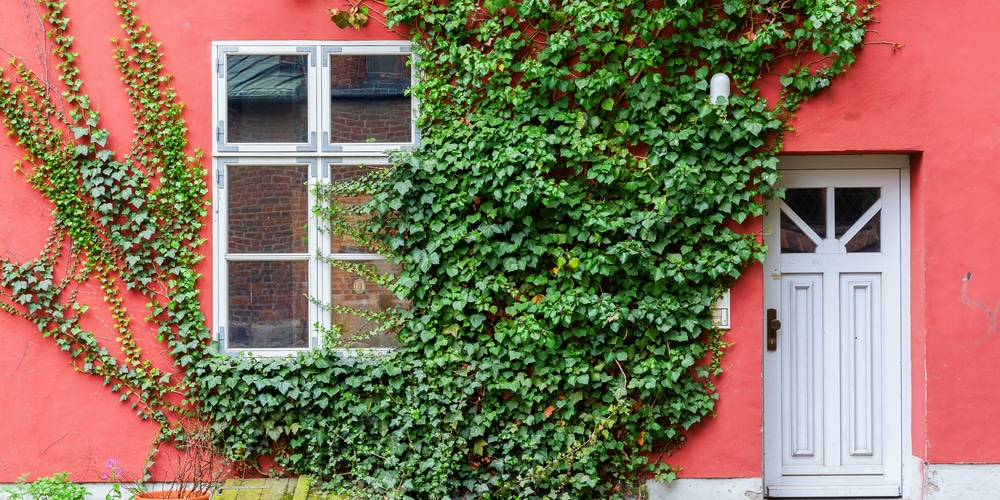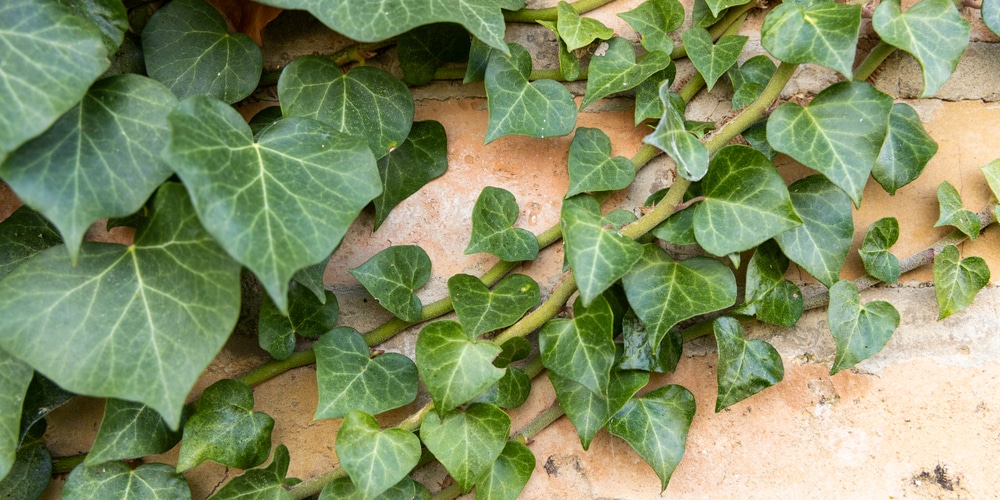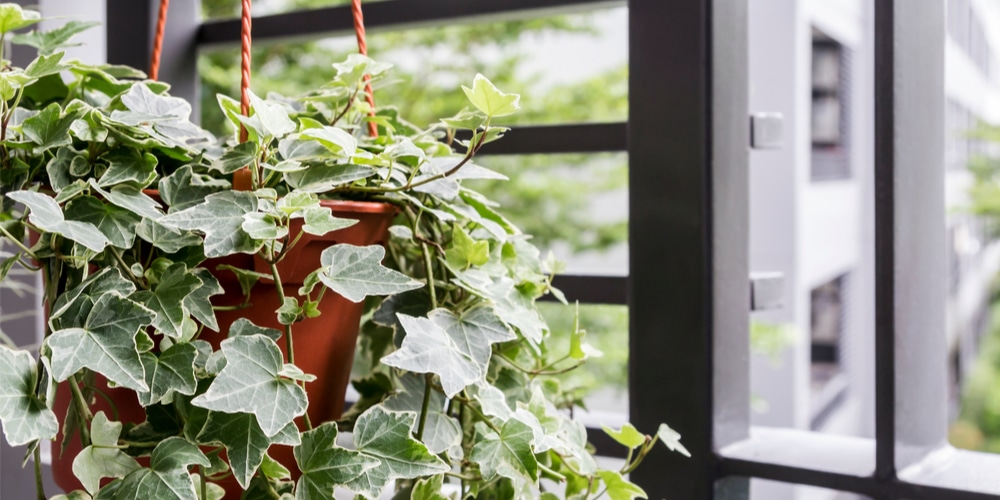Ivy is a charming plant to add to your garden. It has trailing growth habits and unique-looking leaves that look lovely inside (as a house plant, better if in hanging pots) or in your yard. You can train them to grow around fences or even decorate your property’s external walls.
Despite its delicate looks, this plant isn’t particularly challenging to grow: if you successfully give it what it needs to thrive, it will get long and lush in little time. When growing ivy as a house plant, you’ll need to pay attention to lighting: without proper sunlight (even if indirect), these plants will become leggy and unhealthy. But if you need something to brighten your interiors, consider getting this plant.
There are several ivy varieties out there, so you shouldn’t have problems finding one that suits your taste (and your local conditions). One of the most popular species is Hedera Helix, which you might know as English Ivy. Most varieties of ivy are ideal for beginner gardeners, as they are resistant to most diseases and aren’t too fussy about nutrition.
But nothing can be that perfect. If you are here to find an answer to the question: “Why is my Ivy Crunchy?” you are in the right place.
Why Is My Ivy Crunchy
Even though these plants are relatively easy to grow, they might turn dry and crispy if they don’t get what they need. Regardless of where you are growing them, ivy may become crunchy. Here are the most common reasons.
Inadequate Amounts of Water
Watering your plants is easier said than done. All plants have different moisture needs, and you might have to water them at various times of the week to provide them with all they need to thrive. Giving too much or too little water to plants is a common issue among gardeners and one with the worst consequences.
Ivy plants prefer slightly dry soils. If you give them too much moisture, the plants’ roots will stay wet for too long, which might cause root rot and attract other severe fungal diseases. As illogical as that might sound, ivy growing in soggy soil conditions will struggle to get enough nutrients and have a problem absorbing water, which might cause it to become dry and crispy. So, don’t mistake the crispiness of your ivy plants for lack of watering: you might be making things worse!
As a rule of thumb, always feel the soil with your fingers before adding extra moisture. Let the soil dry out before watering your ivy plant: the top inch shouldn’t be moist. Don’t forget to add your plant to a pot with adequate drainage holes to minimize the risk of creating waterlogged conditions.
But that doesn’t mean you shouldn’t water your ivy: it might become brown and crispy even when dehydrated. Ideally, water your ivy no more than once a week. If extra water gets into the drainage pot, ensure you empty it.
Too Much Fertilizer
Ivy plants usually grow well even without fertilizer. However, you might consider applying a nitrogen-rich product to encourage leaf production and make your plant even denser.
But too much of a good thing can be damaging: always follow the instructions you find on the product’s label to avoid burning your ivy. Too much nutrition might cause your plants to become crispy and brown.
Don’t forget to only fertilize your plants during the growing season (between spring and summer): suspend application in the winter, when your ivy will be dormant.
Inappropriate Lighting
Lighting is essential for plants to grow and reproduce. Ivy plants do well in medium to bright light and won’t tolerate direct sunlight (which can burn their leaves). Pay attention to where you place your plants. If you are growing your ivy indoors, ensure you add some sheer curtains to the windows next to them.
However, keeping ivy plants in locations with deprived light conditions might slow their growth and cause their death. Aim for about four to six hours of indirect light, or plant your ivy under partial shade for best results.
Extreme Temperatures
Ivy prefers mild climates: they are native to Central and Northern Europe, meaning they won’t tolerate heat as much as other plants. Try to keep them at temperatures ranging from 50 to 70F during the day. Warmer temperatures might cause your ivy to turn crispy. Under such circumstances, you may have to increase the watering frequency.
Why Is My Ivy Crunchy: The Bottom Line
Other less common causes of crunchy ivy leaves include inadequate humidity levels and attacks from pests. Even if ivy plants do better in slightly dry soil, they need some humidity around them: consider misting them once per week to keep them happy.
Pests will attack your plants when they are weaker. If you follow our recommendations, you shouldn’t have problems. However, ensure you take action as soon as you notice their presence to avoid infestations.
Related Article: 10 Beautiful Vines That Grow on Trees


